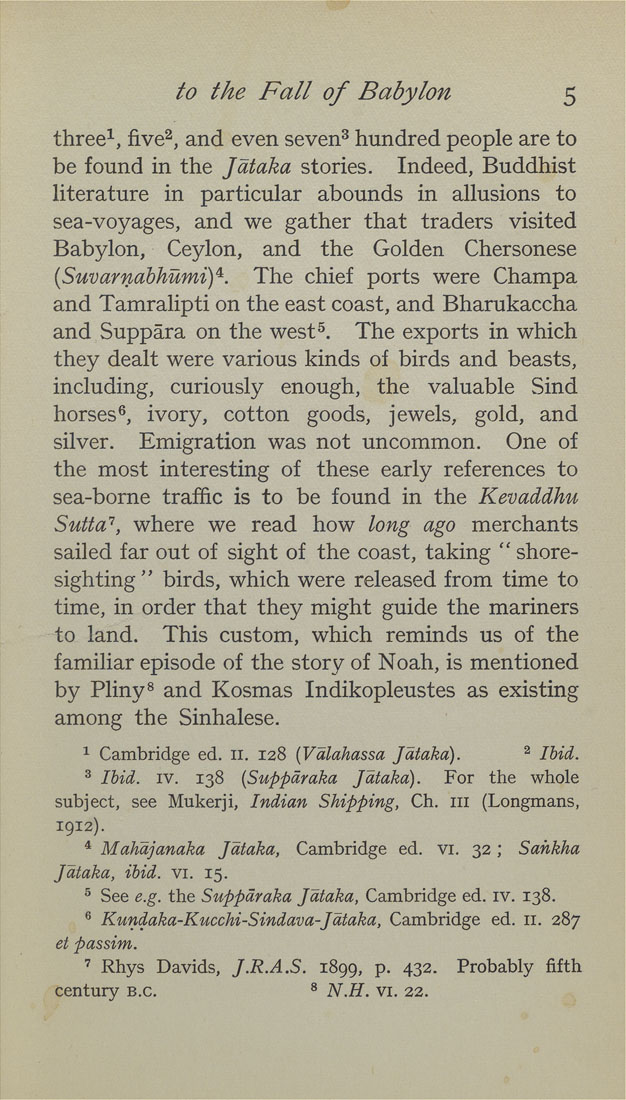to the Fall of Babylon 5
three^, five^, and even seven^ hundred people are to
be found in the Jdtaka stories. Indeed, Buddhist
literature in particular abounds in allusions to
sea-voyages, and we gather that traders visited
Babylon, Ceylon, and the Golden Chersonese
(Suvarnabhumi)^. The chief ports were Champa
and Tamralipti on the east coast, and Bharukaccha
and Suppara on the west^. The exports in which
they dealt were various kinds of birds and beasts,
including, curiously enough, the valuable Sind
horses®, ivory, cotton goods, jewels, gold, and
silver. Emigration was not uncommon. One of
the most interesting of these early references to
sea-borne traffic is to be found in the Kevaddhu
Sutta'^, where we read how long ago merchants
sailed far out of sight of the coast, taking " shore-
sighting" birds, which were released from time to
time, in order that they might guide the mariners
to land. This custom, which reminds us of the
familiar episode of the story of Noah, is mentioned
by Pliny s and Kosmas Indikopleustes as existing
among the Sinhalese.
^ Cambridge ed. ii. 128 {Valahassa Jataka). ^ Ibid.
^ Ibid. IV. 138 [Supparaka Jdtaka). For the whole
subject, see Mukerji, Indian Shipping, Ch. in {Longmans,
1912).
* Mahajanaka Jataka, Cambridge ed. vi. 32; Sahkha
Jdtaka, ibid. vi. 15.
^ See e.g. the Supparaka Jdtaka, Cambridge ed. iv. 138.
® Kundaka-Kucchi-Sindava-Jdtaka, Cambridge ed. 11. 287
et passim.
' Rhys Davids, J.R.A.S. 1899, p. 432. Probably fifth
century e.g. ^ N.H. vi. 22.
|








